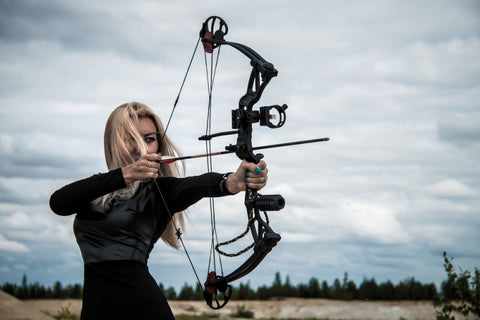
Even if you’re brand new to archery, you’ve probably heard the term bow sight before. But what is it, and why is it significant?
Bow sight refers to a component of the bow that allows you to adjust your aim to shoot more accurately. When it’s not calibrated correctly, however, it can lead to accuracy issues. Bow sight adjustments rectify this.
Now that we’ve squared away those basics, it’s time to get more in-depth about how to adjust a bow sight so you can shoot with pinpoint accuracy. Ready? Let’s dive in now!
Table of Contents
What Is a Bow Sight & Why Does It Matter?
Bow sights are the part of an archery bow that allows you to adjust your sightlines and aim your bow better to create a perfectly-aligned shot. Shooting with laser precision is possible with a bow sight, so long as you move the sight pins to their proper spots, which can be done by adjusting the sight housing.
Four Common Types of Archery Bows
Not all archery bows are created equal. In fact, bows come in four main types:
- Recurve
- Longbow
- Compound
- Crossbow
The compound bow is perhaps the most common type, but bow sights across all four types of bows are, by and large, fairly similar. Thus, the process for adjusting a bow sight on different bows should be fairly similar as well.
When it comes to compound bow sight adjustment, the more pressing question is whether or not your bow sight is single-pin or multi-pin.
How to Recognize It’s Time for a Bow Sight Adjustment
Are you sighting properly and still not hitting the target? Is it happening again and again? It’s probably not your aim that’s at fault, but rather, the way your bow sight is calibrated.
How to Level Your Bow Sight
Before you get to adjusting a bow sight, you need to adjust the leveling of the sight. There are several axes to adjust the leveling, including a second axis and a third axis.
The second axis level can be seen through the hole of the sight. Imagine hanging a picture on a wall and leveling it. That’s second-axis leveling. Now, imagine leaning a picture up against a wall vs. hanging it straight up and down: that’s third-axis leveling, which is important if you’re going to be shooting at angles (i.e on the unlevel ground).
Leveling in either instance is as simple as loosening the sight (via allen wrench, normally) and then adjusting until the bubble of the level is centered.
How to Adjust Compound Bow Sight: Single vs. Multi-Pin

Adjusting a bow sight looks different when the bow sight in question is single-pin compared to multi-pin. Let’s break down the steps of bow sight adjustment for each type of pin setup below.
Adjusting a Multi-Pin Bow Sight
Most archers today use multi-pin bow sights. They employ a range of site pins – normally, three, five, or seven – that can be set as aiming references for different distances – normally, 20 yards, 30 yards, 40 yards, 50 yards, and 60 yards. Often, the 20-yard pin will be the top pin and the 60-yard pin will be the bottom pin.
If it’s your first time shooting with a new sight, you’ll have to calibrate it, since you won’t know where your arrow will hit compared to the pins.
Though the highest pin will generally be 20 yards, it’s recommended to start shooting from a distance of 10 yards, using a large target so there’s more margin of error for adjustment.
Shoot, aiming for the bulls-eye, and take note of where the arrow lands. If it is too far in one direction, you’ll want to move the sight in that same direction (i.e. if your arrow hits the left of the bulls-eye, you move the sight housing left). Adjusting the sight is generally done with an allen wrench, which you can buy at any archery shop.
Once you’ve calibrated the pin for 20 yards, you’ll move to each subsequent pin. It’s important to note that you don’t want to move the pins themselves. You want the pins set in their original position until after you’ve calibrated the bow sight entirely. Then, as you shoot, you can move each pin within the sight if needed for minor adjustments.
Adjusting a Single-Pin Bow Sight
Sighting in a single-pin bow can be harder than in a multi-pin sight because it’s difficult to gauge your initial adjustments. That said, the process of actually making those adjustments is fairly simple.
The fundamentals of sight adjustment are the same: make sure you’re adjusting the sight and taking note of where your arrows are landing in relation to the target.
To adjust a single-pin bow sight, you’ll want to loosen the scope housing, then adjust it up and down to shoot from different distances.
You can also move your scope left and right by loosening the scope and re-tightening it.
Discover AccowBow Training Bows
If all the above seems like it’s overly complex, we understand. Archery is a sport that takes practice. But if you’re looking to up your archery game, AccowBow can help! Explore high-quality archery training devices. Try out the 1.0 model or 2.0 second version, and you’ll be shooting like a pro in no time.











































